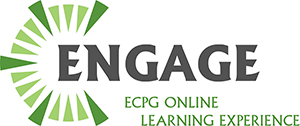- Video
- //
- Recovery Residences: Standards, COVID Impacts, & the Future
Recovery Residences: Standards, COVID Impacts, & the Future
Recovery Residences: Standards, COVID Impacts, and the Future
Alan Muia, Chair
WA Alliance for Quality Recovery Residences
Recovery Residences
The National Alliance of Recovery Residence (NARR) defines a Recovery Residence (RR) as a broad term describing a sober, safe, and healthy living environment that promotes recovery from alcohol and other drug use and associated problems. Many thousands exist in the United States that vary in size, organization, and target population. (The exact number of recovery residences is unknown since many RRs are not regulated by government or independent organizations.) At a minimum, RRs offer peer-to-peer recovery support with some providing professionally delivered clinical services all aimed at promoting abstinence based, long-term recovery. Recovery residences are sober living environments, meaning that residents are expected to abstain from alcohol and illegal drug use. Each credentialed recovery residence publishes policies on relapse sanctions and readmission criteria and other rules governing group living. Recovery residences may require abstinence from particular types of medications according to individual policy.
The term Recovery Residence was promulgated by the National Alliance for Recovery Residences (NARR) and refers to standards-based recovery housing. These standards are constructed atop the Social Model of Recovery Philosophy (SMRP) which emerged in California some seventy years ago, attracted science-based, academic researchers over the following decades which, in turn, led to SMRP migration nationwide in the late 60’s and beyond. Recovery-oriented housing founded on SMRP principles continues to be studied academically due to its proven effectiveness in promoting and sustaining long-term recovery.
SAMHSA recognizes the value of Recovery Residences and views them as a viable and cost-effective alternative to established recovery-oriented systems of care. These homes are a good alternative because they provide safe and healthy environments that support residents in their recovery. These communities empower people by providing support as they transition towards living independent and productive lives in their respective communities. Recovery homes offer a unique alternative to harm reduction—a component of the Housing First model—for individuals whose main goal is to find a sober living environment.
As a result of the US Department of Health and Human Services longitudinal studies of individuals post-discharge from acute level of care models. The Florida Association of Recovery Residences and Sheffield Hallam University conducted The Recovery Capital Research Project in 2017 measuring the success of accumulation of recovery capital of over 600 residents in standards-based recovery residences, bridging the cap between treatment and self-directed recovery.
Resources:
https://narronline.org/resources/
https://farronline.org/document-library/
https://farronline.org/recovery-outcomes/
http://recoveryoutcomes.org/august17/
http://recoveryoutcomes.org/reccap/
https://www.samhsa.gov/homelessness-programs-resources/hpr-resources/recovery-homes-help-people
https://www.samhsa.gov/homelessness-programs-resources/hpr-resources/affording-housing-models-recovery
This is a presenter video blog for:

